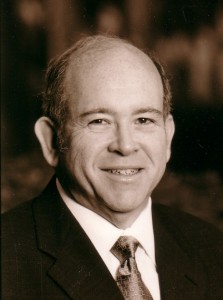 On the way to our spring vacation, I wanted to choose a book that had some ties to the region we were visiting – China. I could not put my fingers on my copy of Chairman Mao’s Little Red Book, so I grabbed Stephen Ambrose’s Nothing Like It In The World, about the building of the Transcontinental Railroad. I thought it would be interesting because of how the Chinese had participated in the construction. Little did I know how much I would learn about Governor Brown’s $100 billion high-speed train folly.
On the way to our spring vacation, I wanted to choose a book that had some ties to the region we were visiting – China. I could not put my fingers on my copy of Chairman Mao’s Little Red Book, so I grabbed Stephen Ambrose’s Nothing Like It In The World, about the building of the Transcontinental Railroad. I thought it would be interesting because of how the Chinese had participated in the construction. Little did I know how much I would learn about Governor Brown’s $100 billion high-speed train folly.
First, if you are interested in the development of this country and emergence of California as a powerhouse, you should pick up this book. The railroad united a country separated by immense space and majestic mountain ranges. Before the railroad, in order to traverse the country from the West Coast, one could take a prairie wagon across on a six-month trip, go on a long boat trip around Cape Horn, or risk your life cutting through Panama’s jungle before the canal existed. Ambrose makes the case that the railroad united the country from ocean to ocean, particularly coming after the brutal Civil War that had been fought.
The accomplishment did come with government support and the original encouragement of Abraham Lincoln, but rather was built on the backs and from the pockets of hard-driven and ambitious individuals. You may not have heard of Theodore D. Judah, but he was the creative genius and engineer who pushed the project. Certainly you have heard of four other men, without whom there would be no Central Pacific (CP), the railroad that headed east to meet the Union Pacific (UP) plowing west.
Leland Stanford, Collis P. Huntington, Charles Crocker and Mark Hopkins were the reason the project got anywhere. These are names still recognized throughout California over 150 years later. They risked their financial well-being and their reputation to accomplish a project that had never been done anywhere before and many thought could not be done. They had to cut their way through the Rocky Mountains without the aid of modern construction tools when nitroglycerin had just been invented. They had an unproven workforce that consisted mainly of Chinese immigrants who did not speak English. These men of great will pushed forward and met the Union Pacific to change America.
And now what do we have – Jerry Brown. Who is the creative force behind this project some government bureaucrat? Who will be the driving force to build this statewide railroad other than our 75-year-old governor and we have not even broken ground. Who will be assuming the risk other than the California taxpayer? Brown went begging on our behalf to whom – The Chinese. Maybe he thought he could hook them since possibly their cousin had worked on the original railroad or perhaps he just thought they were suckers.
Admittedly, the construction of the choo-choo will be ever so much easier than the CP. Cutting through avocado groves seems so much easier than a Rocky Mountain. The workers will not have to ward off Indian attacks as the workers did for the UP. After all they are Native Americans now and they are too busy running their casinos to get involved in this project. Maybe Guv Brown should see if they want to parley their casino winnings into owning the railroad.
But here is the problem – there is no economic sense to this “high-speed” rail project. As Ambrose stated of people coming to California “They wanted to get there, if only for a visit and only the railroad made it possible for them to get there in a week rather than months, at a cost of not much more than $100 ( 1867 dollars) rather than $1,000 or more. Where are the time savings that we would derive from taking this train up and down the state? Where are the cost savings? You can fly from any airport every hour back and forth from North to South for less than these train tickets are ever going to cost. That is unless they charge $50 and bury the operational losses in the state budget. Then there is the cost. Back then it cost $48,000 per mile to build versus the $2 million per mile under the Brown plan. Inflation has not been that much.
Little did I know when I choose Ambrose’s book that it would be so appropriate for the time we are in now. The contrast between the giants of the age and the small people leading us now became quite clear. The picture of our government getting behind, but not being the purse for important projects is such a contrast to the useless development of Governor Brown’s railroad. The fortunate thing is lessons can be learned before we dive off the deep end and build the railroad to nowhere.

